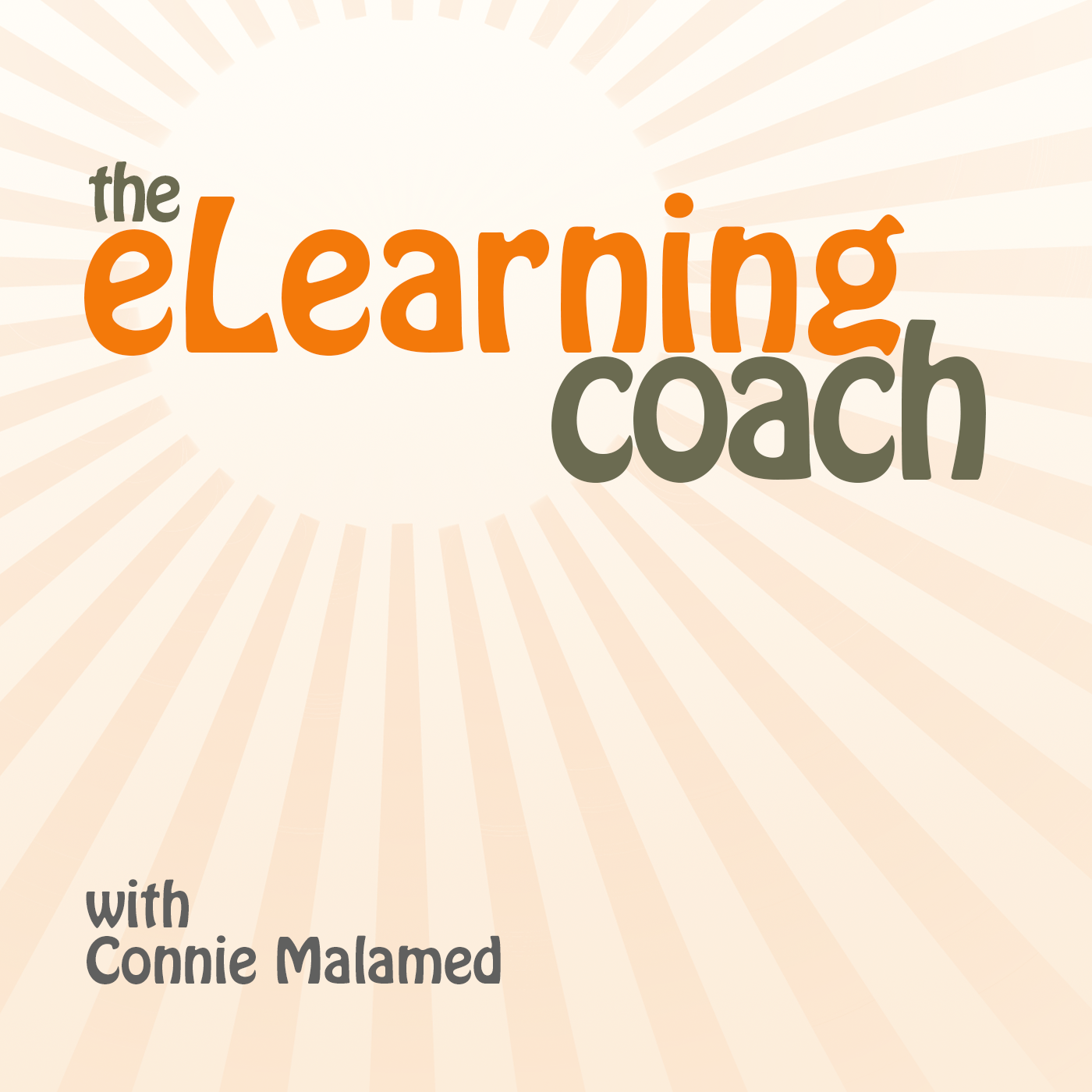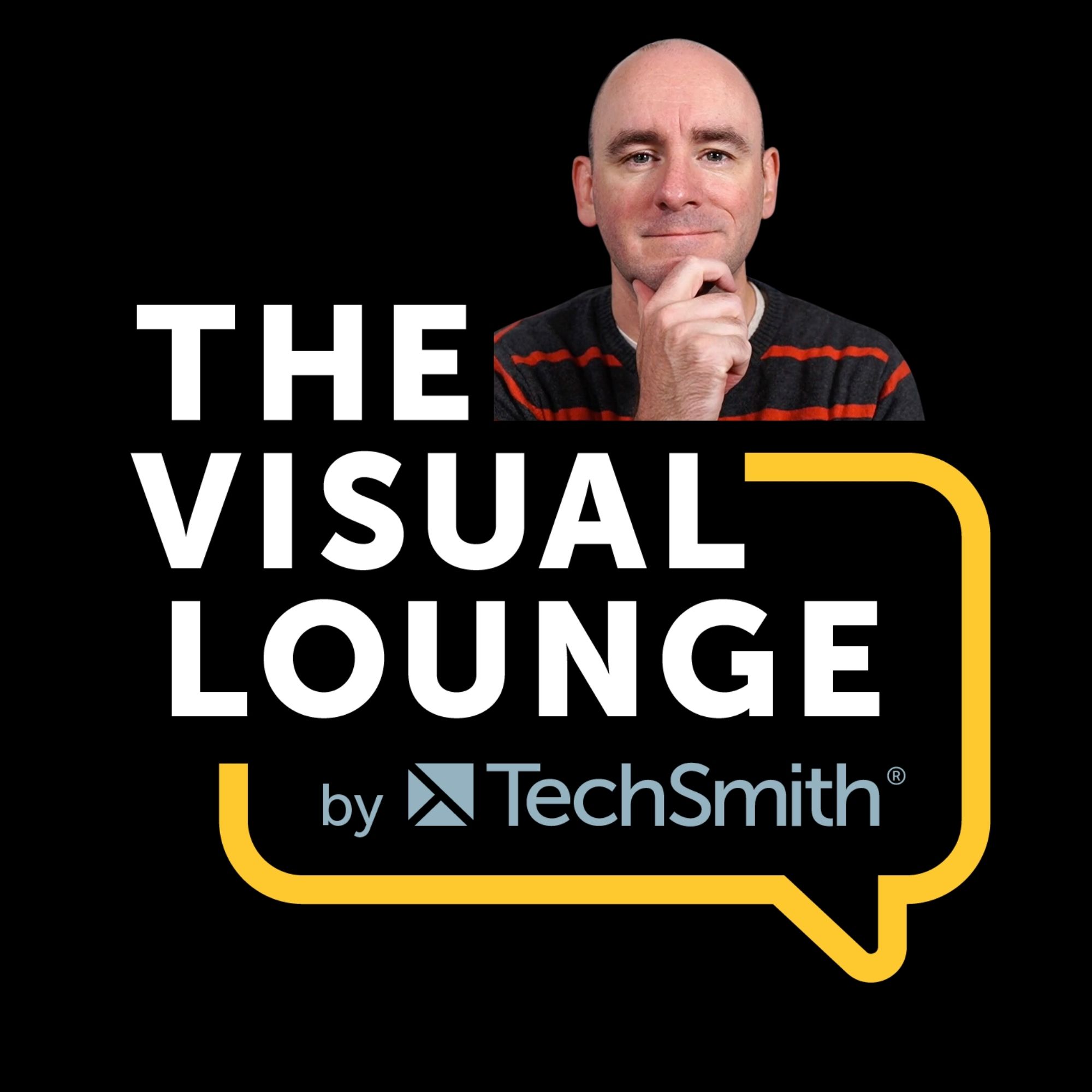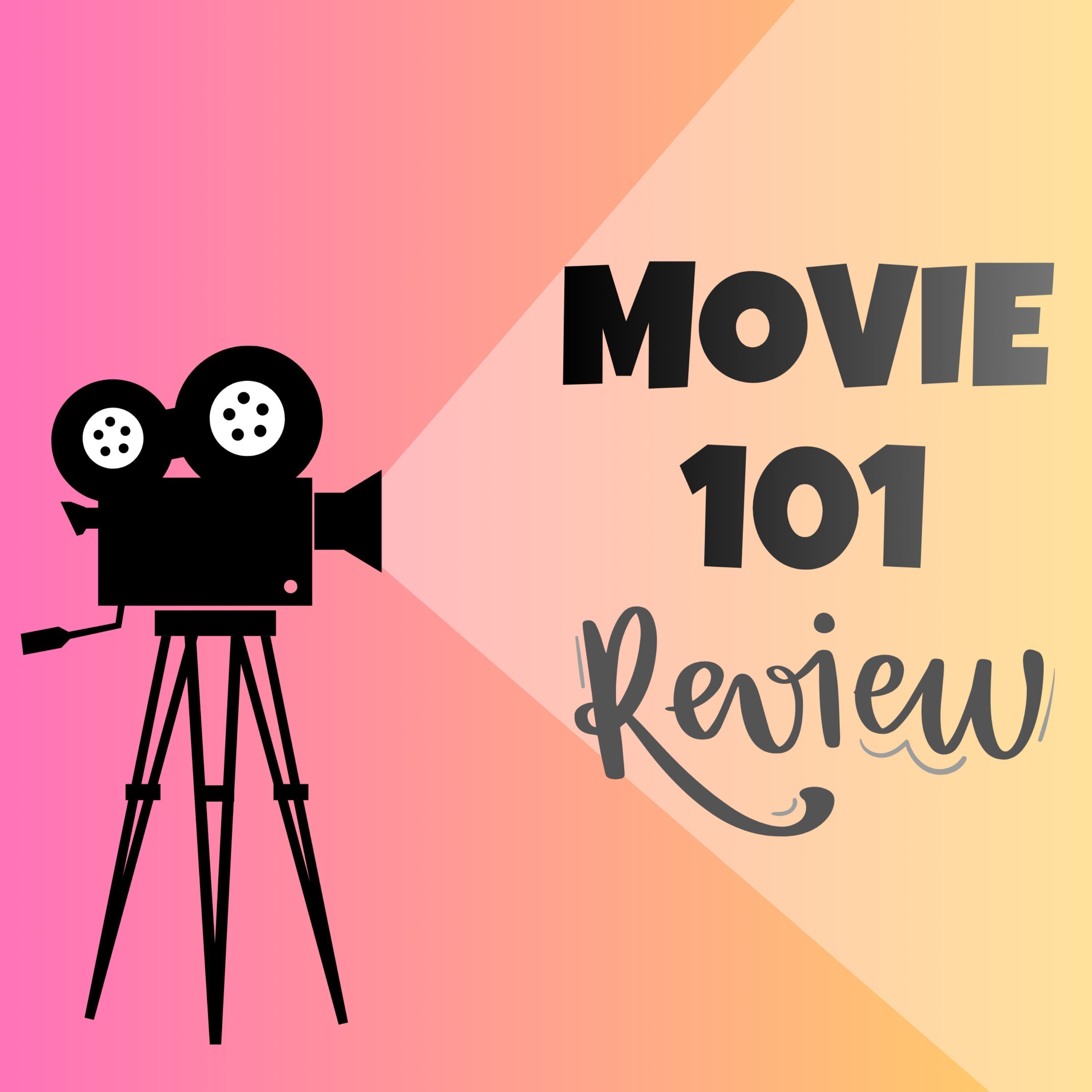
Designing with Love
Hosted by Grand Canyon University (GCU) adjunct instructor and professional instructional designer Jackie Pelegrin, this podcast explores instructional design, e-learning, and how to incorporate AI technology into different aspects of your work. Tune in for expert tips, real-world insights, and inspiring stories from students, alumni, and leaders in the field.
Designing with Love
Career Shifts: From Classroom to Corporate Instructional Design with Sakina Brandford
The journey from classroom teaching to corporate instructional design can seem daunting, but it's entirely possible with the right education, strategy, and mindset. In this revealing conversation, recent Grand Canyon University (GCU) graduate Sakina Brandford shares her successful transition story just one week into her new role as an instructional design specialist in the oil and gas industry.
The conversation also explores how AI is transforming the field, from voice-overs to multi-language translations, while balancing concerns about proprietary information. Sakina's journey demonstrates that with proper preparation and a strategic approach, career changers can successfully navigate the transition from education to corporate instructional design. Whether you're currently pursuing your degree or contemplating a career shift, this episode offers valuable insights from someone who has recently made the leap.
Use the link to join PodMatch, a place for hosts and guests to connect.
Disclaimer: This post contains affiliate links. If you make a purchase, I may receive a commission at no extra cost to you.
💟 Designing with Love + allows you to support the show by keeping the mic on and the ideas flowing. Click on the link above to provide your support.
☕ Buy Me a Coffee is another way you can support the show, either as a one-time gift or through a monthly subscription.
🗣️ Want to be a guest on Designing with Love? Send Jackie Pelegrin a message on PodMatch, here: Be a guest on the show
🌐 Check out the show's website here: Designing with Love
📱 Send a text to the show by clicking the Send Jackie a Text link above.
👍🏼 Please make sure to like and share this episode with others. Here's to great learning!
Hello and welcome to the Designing with Love podcast. I am your host, Jackie Pelegrin, where my goal is to bring you information, tips and tricks as an instructional designer. Hello, GCU students, alumni and fellow educators, Welcome to episode 37 of the Designing with Love podcast. Today, I have the pleasure of interviewing Sakina Branford, who completed her master's degree in instructional design at GCU. Welcome, Sakina, Thank you. Thank you, I'm glad to be here. Yes, me too. So when did you earn your master's degree in instructional design from GCU?
Jackie Pelegrin:I earned my master's degree in January of this year, 2025, at the conclusion of our instructional design capstone course, great, wonderful, and I believe you had a chance to come to Phoenix and come to graduation in person. So how was that for you? Did you like that?
Sakina Brandford:I really enjoyed it. I wish I could have stayed a little bit longer, but I loved. You know, coming to the campus, I was able to see a little bit of the campus at the arena. I was there with my husband and daughter and we really enjoyed the ceremony. It was super exciting. Everyone, of course, graduation everyone's super excited. It was great to be in a room with so many educators and getting an advanced degree finally yes, Several years being in the profession.
Jackie Pelegrin:That's great, I love it. And being able to come in person, there's nothing like that. So that's great. Oh, yeah, yeah, and hopefully you'll have a chance to come back to Phoenix when it's cooler because it's warming up. It's already in the hundreds now. You know it's almost June. We're in the hundreds now, so we're triple digits. So hopefully when it cools off usually around, I would say that, like around Halloween, like late October, is when it starts to get really nice. And so, yeah, hopefully, maybe in the fall you can come back and visit when it's nice and cool. Come come up and visit Grand Canyon and things like that. There's so many great things to do up North, so it's a lot of fun.
Sakina Brandford:So yeah, yeah, definitely, I would like.
Jackie Pelegrin:to yeah, and then we can maybe go do something fun. So that would be great, wonderful. So what aspects of the program did you enjoy the most? When you were taking the classes and everything?
Sakina Brandford:Well, first I would say I really enjoy that GCU caters to full time working adults, so I felt like being able to take one course at a time and concentrate on that one course. It really helped me be successful in the program. After about the second course, I was adjusted to the new schedule and knew exactly when assignments and discussions were due. Assignments and discussions were due and, like I said, it really allowed me to be successful because I had started a master's program many years ago through another university and I wanted to take one course at a time. But due to the structure of the programs at that time and it was completely online as well, but I was unable to really complete it in the time frame that they really required if I was doing one course at a time for nine weeks.
Sakina Brandford:Oh, I see, enjoyed being at GCU and being an online student in the IB program. I feel like it really is structured well. With all the courses one after another, you really they build on each other and you are gaining skills over time course. It really sets you up for success if you really try to use some of those tips and things that you learned in the first course throughout the rest of the program because they really are helpful from, I would say, even looking at some of the job postings. That's one of the assignments that we had in the very first couple of courses.
Jackie Pelegrin:Yes, I remember that.
Sakina Brandford:Yes, and if you really just kind of peek into those things in job postings throughout your time in the program, it helps you to know what skills that employers are looking for and it can motivate you along the way when you're working on your assignments.
Jackie Pelegrin:Yeah in the master's program.
Jackie Pelegrin:That's great. So it helps to kind of pave that path for you and see what you need to do to get towards that dream job that you want, and yeah, that's really helpful. Yeah, and you're you're even utilizing you. I would imagine you were utilizing the skills that you learned in each course right away, so it's not like you had to wait years right to apply them. You were able to do that on the spot because of the project-based method, of the way the courses are laid out in the program, right.
Sakina Brandford:I definitely like the fact that they were project based and I tried to focus on, I would say, corporate instructional design and even though I was an educator, I was very familiar with education but wanting to be more marketable to businesses and corporations, to be more marketable to businesses and corporations, I decided to take on projects in the program that were, I mean, I had some education-based, but I wanted to be more broad with my projects and think about industry training. I love that.
Jackie Pelegrin:Yeah, I've heard that from other students in the program too that I've had classes with or that I've interviewed here on the podcast that they realized early on that they needed to be diversified and what they were doing their projects on, and not just focusing on, maybe, the area that they were most familiar with, but branching out with. But branching out, yeah, really looking at those areas, because then if you just stay in one lane per se, as they say, and then all your artifacts are going to be based upon that, but then if you find a really great job in another area, then that employer may say oh well, you have great artifacts, but they're all focused on this and what does your diverse portfolio look like? And so that can be.
Jackie Pelegrin:That can be hard because it seems like a lot of employers want to see that diversity and want to see that you're able to expand out into different industries and look at those areas as well.
Sakina Brandford:Especially since instructional design will at least a big chunk of it does focus on adult learning, and so you want to be able to show your skills, um, and how you are able to structure courses for adults versus, uh, k-12 right even, or even higher ed, um, because it's different.
Jackie Pelegrin:It's different right, yeah, it's it's. Every segment is is different and what their their needs are and how you approach it right, how you even approach the Addy model or the Sam model it's all different and how we go about approaching that. Because I've worked in higher education for a long time but I also worked in corporate for a little while and just seeing the difference between those two was interesting. There were some similarities but there were also some key differences in how they approached instructional design and like utilizing the ABC model to write objectives. They did that when I worked in the higher education spectrum but did corporate, you know, and helped employ and do an employee training. But then when I went to work at GCU and I was like, oh, they don't use the ABC method to write and start to write objectives, so it was kind of interesting.
Jackie Pelegrin:And so having to kind of shift my mindset and go from employee training and development in that corporate education world and then having to shift to curriculum design and higher education was a shift for me. So, yeah, so it's interesting how each one is unique and how they go about doing that and even, like you know, military and other nonprofit and things like that. I know some people that work in those industries and it's different there too, and so. But it's very interesting because instructional design kind of came out of that need for training the military in World War II. So it's very interesting the history of it and how it's evolved over time and been able to kind of take that and bring it into different industries.
Sakina Brandford:So it's pretty neat yeah it is and the fact that you know people who are in the field are still referring to the ADDIE model and use it as the standard. Even though there are many design processes that have deviated from the ADDIE model, they still consider the ADDIE model and when you look at a lot of job postings, they do list the ADDIE model there, even though they may not really use it so rigid and they use other agile processes. It's amazing that it has really, you know, stuck the test of time and people feel like it's a really good model. I had a colleague once he moved into K-12 after retiring as an instructional designer and he told me that he actually took courses under the guy who developed the AdDIE model before it was even called the ADDIE model, so he was really proud of that. Wow, that's amazing.
Sakina Brandford:Yeah, it is, and so it really has stood the test of time with many other learning theories, because there's so many, so many right, absolutely, that's true, great.
Jackie Pelegrin:So what kind of work do you currently do, sakina, right now?
Sakina Brandford:I just recently landed um one of my first full-time roles in instructional design as an instructional design specialist, with a company that supports the oil and gas industry. Oh wow, that's exciting. It is, it is. And so going from K-12 classroom teacher to in the corporate world is definitely a shift in change. And I'm still I'm only within the first week of this job and you know I keep pinching myself like, wow, this is a really I really did a whole, you know, career change. It's kind of funny, but yeah it shows it's possible right, Right, right.
Sakina Brandford:So they kind of started me out with a small project. I did some AI, used AI voiceover to update a course, and then I'm going to be starting another course for security officer training. So I'll have to do some design and use. I'm using Articulate Storyline. So I'll definitely encourage folks in the program to really try to learn those industries softwares that a lot of companies are using, because they are really looking for folks that are, you know, they really understand how to use the software.
Jackie Pelegrin:Right, because they don't really have the time to do the training on the software. They want someone that can come in and not necessarily know every single feature of it, but at least know enough to where you can create engaging content and not have to spend two weeks learning the software. Right, because they want you to hit the ground running, pretty much aside from training and things like that and learning about the company, but they they really want you to kind of be up and running pretty quickly Right, right.
Sakina Brandford:Yeah, so they, you know they want someone who can, like you said, go ahead and get started designing those courses, putting content. A lot of companies still have a lot of content on PowerPoint or documents and they are trying to upgrade to more e-learning and so, even though they may have a lot of e-learning courses already, there is still content that they're getting from their SMEs that could be, you know, on PowerPoint that they're needing or wanting to convert over, and the company that I work for they're global, global companies, so I'm working with SMEs that are working in different parts of the world, so it's really interesting.
Jackie Pelegrin:Wow, that's exciting, you know. It's interesting too because when companies have their materials on PowerPoint and the notion has been, when people aren't familiar with instructional design, they think that we can just take a PowerPoint and we can just upload it, convert it, and no problem, we can. And I've even heard some people in the company I work for that aren't instructional designers and don't really understand what we do. And one person said to me well, captivate is like a glorified PowerPoint. And I'm like, no, it's not, it's more than that. And so I corrected him and I'm like with all due respect, you know, and I so when I showed him some of the things I had done on Captivate and Storyline and things like that, and he's like, oh, there's more to that. And I was like, yes, it's not just Glorify and PowerPoint, there's more than that.
Jackie Pelegrin:So you just can't take a PowerPoint and then plop it into something and call it a done deal. There's so much more to it adding that interactivity to it and things like that that PowerPoint doesn't have a lot of time, so you know that's exciting. Yeah, so you're creating a good, robust catalog for them of different training and courses that they can be able to access anytime on the go, right, so that's great.
Sakina Brandford:Yeah, and as an instructional designer, you're going to continuously learn because technology is going to advance and change and there's additional software like Camtasia and Beyond and video more video editing software that is integrated into all the projects and so it's just learning. A lot you know, even you know beyond the things that we. Some of the projects that I made at GCU and a lot of the software that I used was very familiar and similar, but technology advances, so you have to be willing to try to learn more and more, just to keep up with the trends.
Jackie Pelegrin:Right, that's so true, and you mentioned a little bit about AI earlier. So are there any other specific areas in which you're expanding your knowledge and skills in the field, now that you're in the field and you're in an instructional design position? Now You're in the field and you're in an instructional design position now.
Sakina Brandford:Well, for some of the portfolio work samples, I did use Copilot to gather some of that information, but on the job, you know different companies now they have their proprietary information. They want to keep it private and in-house, and so they are purchasing their own AI tools to use. I haven't really gotten to any of those tools on the job yet. They are taking the storyline files and the other video files and translating them into multiple languages across the world, and so they use AI for that. That's exciting.
Sakina Brandford:That storyline is also moving into that area as well, where they can translate the course in multiple languages right within the articulate software.
Jackie Pelegrin:That's amazing. I love that. It's yeah, it's amazing how AI is really transforming all aspects of our lives right, and instructional design is one of them where it's it's yeah, it's changing so much. It's amazing how you can take that and translate something. Just, you know, take something that's in English and translate it to any language you want. Wow, that's amazing. And that's neat too that you mentioned that they have that. They're they're working on getting a proprietary type of closed AI system, which is what we have where I work, because we don't want the curriculum getting out there or any other of our types of information. That's proprietary, like you mentioned. So I can see a lot of companies doing that and having a closed system where you know you can use the AI and it's not going to. None of the information is going to get out on the web because once it gets out there, it's hard to get it back.
Sakina Brandford:So it's important, Right, and I mean personally I've been just a little bit apprehensive about using, so it's important. I have embraced using AI a little bit more, but I am very cautious of my own information that I'm feeding into AI. I try not to. I mean some people are like going all in and they may pay for the chat, GBC programs. I mean I currently don't do any of that, so I don't want to put anything input into AI that I don't want shared with the rest of the world forever.
Jackie Pelegrin:Right, exactly so you're very cautious. I'm the same way, I'm very cautious about what I share too.
Sakina Brandford:Yeah, yes, but you know I do hope that it does make work efficient. I have spoken to some fellow instructional designers with the certification program that I went through and she was saying that she uses it for design and it has made her work a lot faster and easier to get through, so it saves a lot of time.
Jackie Pelegrin:That's great, yeah. And it's great too because you can use it for other things, like like email. I use it for email. Sometimes, like if I look at an email and I'm like, oh, you know, maybe that could use some tweaking a little bit, I'll take the email and I'll put it in our proprietary AI software and I'll say, can you kind of polish this a little bit? And just where it still has my voice, but it's maybe polished a little bit, maybe a little shorter, because sometimes I tend to kind of put too much detail on my emails and I'm like, okay, I need to shorten this up a little bit. Or just even for this podcast. I do some things too with that and have it help me write outlines and then just tweak it a little bit, make sure it's accurate. But it's really neat because it's a great way to get those first draft ideas and things like that and I use it with my SMEs as well, with program design and and things like that and trying to get that information.
Sakina Brandford:So it's really exciting to have that you know so, yes, and and I guess it's best not to be afraid of it Just use it, but know that it needs, it still needs the human touch, it still needs to be edited and reviewed, and use it to help you in your work?
Jackie Pelegrin:Right, exactly, great. So what are some tips and advice that you can share with those who are currently in the master's program in instructional design at GCU?
Sakina Brandford:As I mentioned before, definitely take advantage of many of those things that you learn in the very first course. Some of those things were getting to know what the job postings look like so you can prepare yourself while you're in the program. And speaking of the job postings, I would recommend, if you are not already on LinkedIn or Indeed, go ahead and get a profile and you I started really slowly, you know making connections with others on LinkedIn, but it really helps when you build up your network on LinkedIn so that whenever you are actively applying for jobs, recruiters out there will actually see your, see your posts or see your profile. So I would start working on that right away so you can build up you know connections at least above 500. So you know people will be able to see you, see your profile. And, other than that, professional organizations.
Sakina Brandford:I had a little bit of time this past year, since I resigned from my full-time teaching job in the summer to be more prepared for the transition into instructional design.
Sakina Brandford:I started looking at the different professional organizations and the different software companies and some of their webinars or trainings that they would offer for free and that really helped in understanding what was happening in the field and reading articles, even if you don't have time to attend webinars or don't want to pay for them, looking at their articles and looking for you know those organizations that allow you to.
Sakina Brandford:You know those organizations that allow you to gain some part-time jobs. I think you, jackie, mentioned Upwork to me and I did look at Upwork for jobs and so I do have a profile there and I think that helps. And I would say, look at those local career fairs or anyone in your local network that could help you with your resume, get it reviewed and just be ready for it, because that, for me at least, I definitely wanted to be job ready, I definitely wanted to gain employment in the field, employment in the field. So I think all of those things really helped me to get my foot in the door and learn from other instructional designers. They're your source of information, right.
Jackie Pelegrin:Really building that network right, Because you want to go beyond what you're learning from your instructor or your professor in the classes and want to be able to actually see what's going on in the field out there.
Sakina Brandford:So many of the discussion posts we had had us searching for different articles, different things that were happening in the field and how to actually design our courses. I know micro learning was something that I really enjoyed learning about, and so many of those discussion posts when you were doing your research. It lends itself to seeing what was happening in the field and what's going on with different professional organizations or those experts out there that are, you know, trying to teach others in the field on the best practices.
Sakina Brandford:So everything that we learn in the program you're definitely going to use. So, and I really want to advise people to get help from your professors. You know, don't don't try to struggle too much, because everyone was very helpful. Um, if you just reach out and so that that's one thing that I I had learned I had a great success advisor that really helped as well, always checked on me, and so in UCIL library, when I first started out in the program, I did reach out to the library staff. They will help you with some of the research projects if you ask.
Jackie Pelegrin:And so I wanted to take full advantage of the opportunities that were offered at the university and so I would really advise others to do the same and, like you said, the library and, yeah, really utilizing that, because I think sometimes I went through an online program myself with my master's in instructional design and sometimes you can feel a little isolated with the program, going to school online, and so having that connection and support is so vital to success with an online program. And, like you said, being able to, you know, dip your toes and things while you're in the program and and things like that is so important, because so many times, programs are built to where they want to teach you all the theory, but where's the practice in it, so you need to have theory and practice simultaneously, right? So, um, being able to have that, yeah, so that way you build your confidence and and so that that's that's wonderful. I love that.
Sakina Brandford:Yeah, so that way you build your confidence and and so that that's that's wonderful. I love that Great. And it's not easy to do when, especially when you have a full-time job. And so if, if and this was a little bit harder for me I, toward the end of the program, try to, you know, build more of a a working connection with other folks in the cohort, of a working connection with other folks in the cohort. That can be difficult because everyone is busy and have their own lives, but if you can find a couple of people that you can link up with or converse with on different projects, it will be helpful because you guys can give each other advice and give you know, real, authentic feedback on some of your work samples for you or your assignments, or you turn them in, but that's helpful. But it can be very difficult as a full-time employee with a family, and so you do the best you can. But those are some of the things that I definitely recommend folks to do while they're in the program.
Jackie Pelegrin:That's great. Thanks, Sakina. So before we wrap up, are there any other ideas or thoughts you wanted to share with the audience?
Sakina Brandford:I would say I've given some of the tips and things that you know I did and the other thing I guess that I did that may be a little different from others. I did seek out a certification program in instructional design. I know some of the professional organizations. They will offer a course on Captivate or a course on Articulate Storyline and you can use Udemy or even some of those LinkedIn courses to help you with some of the software. So if you want to really get out there and land a job where you won't have to teach yourself how to use some of the tools, you'll have a little bit of a head start. You're not going to know everything, of course, but you'll be able to be confident in your interviews. The current job that I have.
Jackie Pelegrin:I was asked in the interview specific questions about our articulate storyline to make sure that I was actually using and had used the program. So, wow, so it's good to be prepared and and know the software and even the models and theories, right, because you just never know what they're going to ask you, true?
Sakina Brandford:Very true, how you would. Actually, I'm hearing that some um, some folks are asked, they're given some content and they are actually having to put a um, a design, a course, and once you get further into, uh, the level two or three of the stage of interviews, they're asking people to take this content, design this course and present it to us in the interview.
Jackie Pelegrin:Wow, that's great. I like that because it really it allows you to showcase your knowledge and skills and that you don't just have, it's not simply a degree, it's something where you have really learned the knowledge and the skills and those what they call the KSAs right Knowledge, skills and abilities. Yeah, that's great, Wow. And that's good to be prepared for, because you don't want to be caught off guard and go oh no, I don't know how to answer that question or I wouldn't know how to do that. So, yeah, that's good, I love that, yeah.
Sakina Brandford:With practice. You're going to have those interviews too, right? I definitely had those too, but the more interviews you have, the more confident and the easier they are. Right. The more confident and the easier they are.
Jackie Pelegrin:Right. So just to keep doing the interviews. And if one doesn't work out, just keep going right and try not to be disappointed in it, because the right one will come along.
Sakina Brandford:And that's what happened with you.
Jackie Pelegrin:So you got the right one and it sounds like you're able to really expand your knowledge and skills even more so. So that's great, wonderful. Well, thank you, sakina, for your time. I appreciate it and again, congratulations on the job and I it sounds like you're going to go really far with this position and and then also with other areas too. As you get more familiar with with things and you get more comfortable, then it sounds like you'll be able to do a lot in the field. So it's great.
Sakina Brandford:All right, thank you, and thank you again. I do look forward to, you know, getting back into education at some point and teaching others some of the skills that I have learned as an instructional designer as well as a former educator, because I'm still very much passionate about education and preparing future educators in the profession. So those are some of the things I'm also looking forward to.
Jackie Pelegrin:That's great. I love that. Yeah, maybe in the company you're working for, you can eventually go in to do professional development for the employees and things like that. And then, yeah, you're on chow and teach the next generation. That's a fun experience. I enjoy doing it myself, so I think you would enjoy it as well. Yes, thank you, thank you. Thank you, sakina, appreciate it. Thank you for taking some time to listen to this podcast episode today. Your support means the world to me. If you'd like to help keep the podcast going, you can share it with a friend or colleague, leave a heartfelt review or offer a monetary contribution. Every act of support, big or small, makes a difference and I'm truly thankful for you.
Podcasts we love
Check out these other fine podcasts recommended by us, not an algorithm.

Buzzcast
Buzzsprout
Podcasting Made Simple
Alex Sanfilippo, PodMatch.com
The eLearning Coach Podcast
Connie Malamed: Helps people build stand-out careers in learning design.
Dear Instructional Designer
Kristin Anthony
The Visual Lounge
TechSmith Corporation
The Way I Heard It with Mike Rowe
The Way I Heard It with Mike Rowe
The WallBuilders Show
Tim Barton, David Barton & Rick Green
Bible Verses 101
Daniel Lucas/Karen DeLoach/Jackie Pelegrin
Wake Up the Lions!
Rory Paquette
Revelations with Cole Johnson
Cole Johnson
Seven Mile Chats
Julia Strukely
Book 101 Review
Daniel Lucas
LOVE Letters
Daniel Lucas
Mental Health 101
Daniel Lucas
Movie 101 Review
Daniel Lucas And Bob LeMent
Geography 101
Daniel Lucas
Abstract Essay
Daniel Lucas /Sal Cosenza
Relatable Wisdom
Wisdom
My Podcast Story
Wisdom
Conversations with Rich Bennett
Rich Bennett
The KAJ Masterclass LIVE
Khudania Ajay
Daniel Bernabe. Daily Inspirational Quotes.
Daniel Bernabe
The Talking Silkworm Podcast
Talking Silkworm
lethal venom
Noah May


